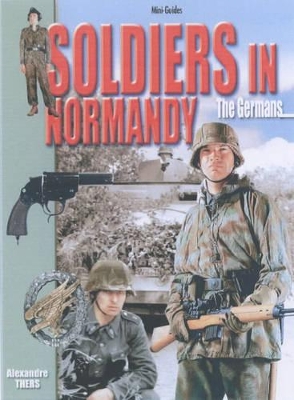Each mini-guide allows the reader to get to know more about a region's history, linking historical events with places of interest and sites of note, as well as providing an unprecedented visual feast of contemporary photographs, uniforms, badges and equipment - all in full color. Practical information is included in each mini-guide and itineraries are suggested for those wishing to visit battlefields, monuments, memorials and museums.
German forces stationed in Normandy at the time of the invasion were mainly Army (Heer) infantry divisions, most of which were supported by horse drawn transport. Amongst these were so-called`static’ units which were incapable of maneuver. The majority of these formations were of mixed ability and had little combat value. The sole exception to this was the 6thFallschirmjäger-Division, made-up of welltrained and fanatical paratroopers. As for armored forces, the German army could only boast three divisions which were truly combat-ready.
By contrast, the Waffen-SS panzerdivisions were vastly better and demonstrated their superiority in combat. Often outclassed by the Allies in terms of materiel (particularly the number of tanks), logistics and suffering from a crippling shortage of fuel, the Germans were literally pushed around by the attackers, being forced to react to rather than to initiate combat, in the most part. Their situation was made even worse by the fact that they could not count on air support.
Despite all of these shortcomings, the Germans used all off the opportunities afforded them by the landscape of Normandy, particularly the Bocage region, to inflict severe damage on Allied units.
- ISBN10 2915239436
- ISBN13 9782915239430
- Publish Date 19 June 2005
- Publish Status Out of Print
- Out of Print 11 April 2017
- Publish Country FR
- Imprint Histoire & Collections
- Format Paperback
- Pages 32
- Language English
